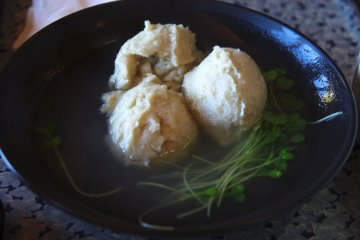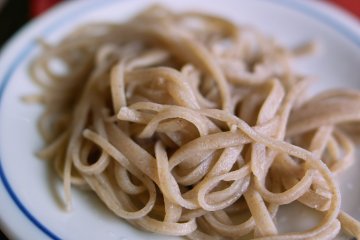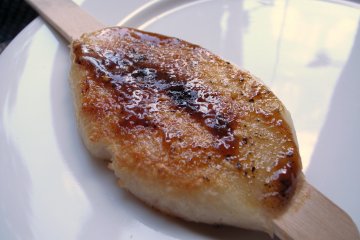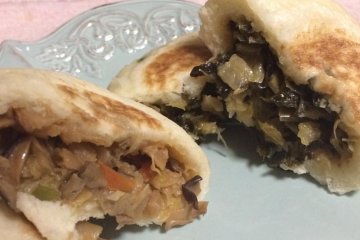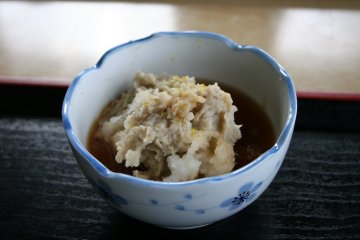Overview
If soba buckwheat is not king in Nagano prefecture, then it is news to the locals. Famed for its Shinshu soba noodles, Nagano is also home to other hearty buckwheat foods like oyaki dumplings, and the truly ancient meal, soba gaki. Rice does make an appearance with the region's own equally hearty gohei mochi rice cake. Here is a simple guide to some of the regional cuisine of Nagano.
Shinshu soba
There may be contenders, but it's hard to argue that Nagano doesn't produce the best soba noodles in Japan. Shinshu soba, as they are known here, are thought to be the original noodle form of soba with some of the best found in Togakushi in the north of the prefecture. Served cold or warm, travelling to Nagano just to eat the soba is to be expected.

Gohei mochi
A mountainous dish that is simple, hearty and delicious, gohei mochi is pounded rice, coated with miso sauce, skewered and then grilled. Unlike the more common mochi rice cakes using mochiko rice flour, goehi mochi is pure rice. With its roasted miso and sweet nutty flavor, gohei mochi are a real treat, particularly on a cold winter's day.

Oyaki
Growing rice wasn't an easy thing in pre-modern Nagano with the locals turning to soba buckwheat for their sustenance. Fermented buckwheat dough wrapped around a stuffing of Japanese sansai mountain vegetables, oyaki is a traditional Nagano dumpling roasted on an iron pan. Served piping hot, these dumplings are both crunchy and chewy and surprisingly addictive.

Soba gaki
Possibly the oldest known dish made with soba, soba gaki is buckwheat and water kneaded together. The resulting sticky dough is then formed into small shapes before being dipped into whatever flavouring is available. A taste of an ancient Japan, soba gaki is often grilled or added to a soup, but however it is used, this versatile food is delicious.








